Integrated Pest Management for THCA Hemp: Oregon Hemp Flower Farm Natural Solutions
The cultivation of high-quality THCA hemp flowers requires a delicate balance between maintaining plant health and managing pest populations without compromising the integrity of the final product. At Oregon Hemp Flower Farm, we've perfected an approach that prioritizes natural solutions and sustainable practices through comprehensive Integrated Pest Management (IPM) strategies. Our commitment to IPM hemp oregon methodologies ensures that every flower we produce meets the highest standards for purity, potency, and safety.
Understanding Integrated Pest Management in Hemp Cultivation
Integrated Pest Management represents a holistic approach to pest control that combines multiple strategies to manage pest populations while minimizing environmental impact and chemical inputs. For THCA hemp cultivation, this approach is particularly crucial because consumers expect clean, natural products free from harmful residues. The foundation of effective natural pest control lies in understanding the complex ecosystem that surrounds hemp plants and working with nature rather than against it.
The IPM philosophy recognizes that completely eliminating all insects and pests is neither possible nor desirable. Instead, the goal is to maintain pest populations below economically damaging thresholds while preserving beneficial organisms that contribute to plant health and ecosystem balance. This approach is especially important in Oregon's diverse agricultural landscape, where hemp farms exist alongside various other crops and natural habitats.
Traditional pest control methods often rely heavily on synthetic pesticides, which can create resistance in target pests, harm beneficial organisms, and leave unwanted residues on the final product. In contrast, IPM strategies for hemp cultivation emphasize prevention, monitoring, and the use of multiple control tactics that work synergistically to maintain healthy crop conditions.
The Science Behind Beneficial Insects in Hemp Production
The cornerstone of our natural pest management system relies heavily on beneficial insects hemp populations that serve as nature's own pest control agents. These tiny allies work tirelessly to keep harmful pest populations in check while contributing to the overall health of our hemp ecosystem.
Beneficial insects fall into several categories, each playing a unique role in maintaining ecological balance. Predatory insects directly consume harmful pests, while parasitic insects lay their eggs inside or on pest insects, eventually killing them from within. Pollinators, though not directly involved in pest control, contribute to the overall health of the agricultural ecosystem and support the growth of companion plants that attract other beneficial species.
Understanding the life cycles and habitat preferences of beneficial insects allows us to create environments that encourage their presence and reproduction. This involves maintaining diverse plant communities around our hemp fields, providing overwintering sites, and avoiding practices that might harm these valuable allies. The result is a self-sustaining system where beneficial insects naturally regulate pest populations without the need for external chemical interventions.
Research has shown that hemp plants naturally produce compounds that can attract certain beneficial insects while deterring harmful pests. By working with these natural characteristics and enhancing them through strategic companion planting and habitat management, we can create robust ecosystems that support healthy THCA hemp production.
Organic Pest Management Strategies for Premium THCA Production
Our commitment to organic pest management principles guides every decision we make in our cultivation practices. Organic approaches to pest control focus on building soil health, promoting plant vigor, and creating conditions that naturally discourage pest infestations while supporting beneficial organisms.
Soil health forms the foundation of organic pest management. Healthy soil teeming with beneficial microorganisms creates strong, resilient plants that are naturally more resistant to pest damage. We achieve this through regular additions of compost, mycorrhizal fungi inoculations, and careful attention to soil pH and nutrient balance. When plants receive optimal nutrition from healthy soil, they produce their own defensive compounds more effectively and recover more quickly from any pest damage that does occur.
Crop rotation and companion planting represent essential elements of our organic strategy. By rotating hemp with other crops and intercropping with pest-deterrent plants, we break pest life cycles and create habitat for beneficial organisms. Plants like marigolds, basil, and lavender not only add beauty to our farms but also produce natural compounds that repel many common hemp pests while attracting beneficial insects.
Organic-approved materials play a supporting role in our pest management program. Neem oil, derived from the neem tree, provides broad-spectrum pest control while remaining relatively safe for beneficial insects when applied correctly. Diatomaceous earth offers physical control of crawling insects, while beneficial bacteria like Bacillus thuringiensis targets specific pest species without harming non-target organisms.
Sustainable Pest Control for THCA Hemp: A Long-Term Vision
Sustainable pest control thca cultivation requires thinking beyond immediate pest problems to consider the long-term health of our agricultural systems. Sustainability in pest management means creating practices that can be maintained indefinitely without depleting natural resources or causing environmental harm.
Water management plays a crucial role in sustainable pest control. Many hemp pests thrive in conditions of excessive moisture or drought stress. By implementing efficient irrigation systems and maintaining optimal soil moisture levels, we can reduce pest pressure while conserving water resources. Drip irrigation systems not only conserve water but also reduce the humidity around plant foliage, making conditions less favorable for fungal diseases and certain insect pests.
Energy efficiency considerations also factor into our sustainable approach. Rather than relying on energy-intensive pest control methods, we focus on passive strategies that work with natural processes. Solar-powered pest monitoring devices, for example, allow us to track pest populations without adding to our carbon footprint.
The economic sustainability of our pest management program ensures that we can continue providing high-quality THCA hemp flowers while maintaining profitability. By reducing dependence on expensive chemical inputs and focusing on prevention rather than treatment, we achieve better long-term financial outcomes while producing superior products.
Biological Control Methods in Hemp Cultivation
Biological control hemp strategies harness the power of living organisms to manage pest populations. This approach represents one of the most environmentally friendly and sustainable methods of pest control available to modern agriculture.
Predatory insects form the backbone of our biological control program. Lady beetles, lacewings, and predatory mites actively hunt and consume many of the insects that threaten hemp plants. These natural predators are incredibly efficient, often consuming dozens of pest insects per day during their active periods. We support predator populations by providing habitat, alternative food sources during low pest periods, and by avoiding practices that might harm them.
Parasitic wasps offer another layer of biological control. These tiny insects lay their eggs inside pest insects, with the developing wasp larvae eventually killing their hosts. Many parasitic wasps are highly specific to particular pest species, making them excellent tools for targeted pest control without affecting beneficial insects.
Beneficial nematodes, microscopic worms that attack soil-dwelling pests, provide control for root-zone problems that might otherwise require soil fumigation or other intensive treatments. These organisms are completely safe for plants, humans, and beneficial insects while effectively controlling grubs, fungus gnat larvae, and other soil pests.
Microbial biological control agents, including beneficial bacteria and fungi, offer additional options for specific pest problems. Bacillus thuringiensis subspecies specifically target caterpillar pests, while beneficial fungi like Beauveria bassiana can control various insect pests through natural infection processes.
Oregon's Unique Ecosystem: Predatory Insects and Regional Advantages
Oregon's climate and ecosystem provide unique advantages for implementing predatory insects oregon pest management strategies. The state's diverse habitats, from coastal forests to high desert regions, support an incredible variety of beneficial insects that can be leveraged for hemp pest control.
The Pacific Northwest's cool, moist winters provide excellent overwintering habitat for many beneficial insects. Ground beetles, rove beetles, and spiders find shelter in crop residues and nearby natural areas, emerging in spring ready to begin their pest control activities. This natural reservoir of beneficial insects gives Oregon hemp farmers a significant advantage in establishing effective biological control programs.
Oregon's native plant communities also contribute to the success of predatory insect populations. Wild flowering plants provide nectar and pollen sources for adult beneficial insects, while diverse vegetation structures offer hunting grounds and breeding sites. Hemp farms that maintain hedgerows and natural areas around their cultivation sites benefit from this natural infrastructure.
The timing of Oregon's growing season aligns well with the life cycles of many beneficial insects. Cool spring weather allows predator populations to build before pest populations explode, creating natural population control mechanisms that persist throughout the growing season.
Regional agricultural diversity also supports beneficial insect populations. Oregon's varied crop production creates a mosaic of habitats that supports different beneficial species throughout the year. This agricultural diversity helps maintain stable populations of natural enemies that can move between crops as needed.
Eco-Friendly Pest Control Techniques for Modern Hemp Farming
Modern eco friendly pest control techniques combine traditional wisdom with cutting-edge technology to create highly effective, environmentally responsible pest management systems. These approaches prioritize environmental health while maintaining the efficacy needed for commercial hemp production.
Physical exclusion methods represent one of the most environmentally friendly approaches to pest control. Row covers, sticky traps, and barrier materials prevent pests from reaching plants without any chemical inputs. These methods are particularly effective during vulnerable plant growth stages and can be combined with other techniques for comprehensive protection.
Pheromone-based pest management utilizes the insects' own communication systems against them. Pheromone traps attract specific pest species, allowing for precise monitoring and targeted control efforts. Mating disruption techniques flood the environment with synthetic pheromones, preventing pest insects from finding mates and reproducing successfully.
Botanical pesticides derived from plants offer effective pest control with minimal environmental impact. Pyrethrin from chrysanthemum flowers, rotenone from certain legumes, and essential oils from various aromatic plants provide pest control options that break down quickly in the environment and pose minimal risks to beneficial organisms when used properly.
Mechanical cultivation techniques, including strategic timing of cultivation operations, can significantly reduce pest populations. Cultivation during specific pest life cycle stages can expose vulnerable pest stages to predators or adverse environmental conditions, reducing overall pest pressure without chemical inputs.
Natural Farming Methods: Building Resilient Hemp Systems
Natural farming methods focus on creating agricultural systems that mimic natural ecosystems in their complexity and resilience. These approaches recognize that healthy, diverse ecosystems naturally maintain pest populations at manageable levels through complex interactions between plants, insects, soil organisms, and environmental factors.
Polyculture systems, where multiple plant species grow together, create more stable and resilient agricultural environments than monocultures. In hemp production, this might involve intercropping with nitrogen-fixing legumes, pest-deterrent herbs, or plants that attract beneficial insects. These diverse planting schemes confuse pest insects, provide habitat for beneficial organisms, and create more stable growing conditions.
No-till and minimal tillage practices preserve soil structure and beneficial soil organisms while reducing disruption to beneficial insect populations. Many beneficial insects spend part of their life cycle in soil, and excessive tillage can destroy these populations. By minimizing soil disturbance, we maintain the complex web of soil organisms that contribute to plant health and natural pest resistance.
Cover cropping between hemp growing seasons provides numerous benefits for natural pest management. Cover crops prevent soil erosion, add organic matter, and provide habitat for beneficial organisms during periods when main crops are not present. Certain cover crops also have pest-suppressive properties, reducing overwintering pest populations and breaking pest life cycles.
Composting and organic matter management create soil conditions that support beneficial microorganisms while suppressing plant pathogens. Healthy soil biology contributes to plant immunity and resilience, reducing the likelihood of pest problems while supporting beneficial organisms that contribute to natural pest control.
Pesticide Alternatives for Clean THCA Hemp Production
The development and implementation of effective pesticide alternatives hemp cultivation has become increasingly important as consumers demand cleaner, more natural products. These alternatives must provide effective pest control while maintaining the purity and quality that premium THCA hemp consumers expect.
Biological pesticides, derived from living organisms or their byproducts, offer effective alternatives to synthetic chemicals. These products often target specific pest species while having minimal impact on beneficial organisms and leaving no harmful residues on the final product. Examples include bacterial insecticides, fungal pathogens of pest insects, and virus-based control agents.
Mineral-based pest control products, such as kaolin clay and silica-based materials, provide physical barriers to pest insects while being completely safe for human consumption. These materials can be applied to plant surfaces to deter feeding insects or used as dusts to control crawling pests.
Plant-based repellents and deterrents offer another category of pesticide alternatives. Essential oils from plants like peppermint, rosemary, and thyme can repel many pest insects while being completely safe for human consumption. These materials often provide additional benefits, such as antimicrobial properties that help prevent plant diseases.
Soap-based insecticides, made from natural fatty acids, provide effective control of soft-bodied insects like aphids and spider mites. These products work by disrupting insect cell membranes and have very short residual periods, making them ideal for use on crops intended for human consumption.
Indoor THCA Flower Production: Controlled Environment Pest Management
Indoor thca flower production offers unique opportunities for precise pest management while presenting its own set of challenges. The controlled environment of indoor growing facilities allows for highly targeted pest control strategies that would be impossible in outdoor settings.
Environmental controls represent the first line of defense in indoor pest management. By maintaining optimal temperature, humidity, and air circulation, growers can create conditions that favor plant health while discouraging pest development. Many common hemp pests thrive in specific environmental conditions, and careful environmental management can prevent pest problems before they begin.
Physical barriers and exclusion methods are particularly effective in indoor settings. Air filtration systems prevent flying insects from entering growing areas, while physical barriers can isolate different growing zones to prevent pest spread. Positive air pressure systems help keep outdoor pests from infiltrating indoor spaces.
Biological control programs can be highly effective in indoor environments because beneficial organisms are protected from weather extremes and pesticide applications from neighboring properties. Controlled release systems for beneficial insects ensure consistent predator populations throughout the growing cycle.
Sanitation protocols become critically important in indoor settings where pest problems can quickly spread throughout entire facilities. Regular cleaning, removal of plant debris, and quarantine procedures for new plants help prevent pest introductions and limit pest spread when problems do occur.
Outdoor THCA Flower Cultivation: Working with Nature's Cycles
Outdoor thca flower cultivation requires pest management strategies that work harmoniously with natural seasonal cycles and weather patterns. This approach demands a deep understanding of pest biology and natural ecosystem dynamics.
Seasonal timing becomes crucial in outdoor pest management. Understanding when specific pests emerge, reproduce, and are most vulnerable allows growers to time control measures for maximum effectiveness. Early season preventive measures often prove more effective and economical than reactive treatments later in the growing season.
Weather monitoring and forecasting help predict pest pressure and optimal timing for control measures. Many pest insects have specific temperature and humidity requirements for development and reproduction. By monitoring weather conditions and understanding pest biology, growers can anticipate pest problems and implement preventive measures.
Habitat management around outdoor growing areas significantly influences pest populations. Maintaining diverse plant communities, providing overwintering sites for beneficial insects, and managing weed populations all contribute to natural pest control. The key is creating habitats that favor beneficial organisms while discouraging pest species.
Natural predator conservation becomes particularly important in outdoor settings where beneficial insects face numerous challenges including weather extremes, pesticide applications on neighboring properties, and habitat destruction. Creating refuges and alternative food sources helps maintain stable beneficial insect populations.
Greenhouse THCA Flower Systems: The Best of Both Worlds
Greenhouse thca flower production combines the environmental control advantages of indoor growing with the natural ecosystem benefits of outdoor cultivation. This hybrid approach allows for sophisticated pest management strategies that leverage the benefits of both systems.
Integrated ventilation systems in greenhouses can be designed to encourage beneficial insect movement while discouraging pest species. Strategic placement of vents and fans creates air currents that favor beneficial insects while disrupting pest behavior patterns.
Banker plant systems, where alternative host plants support beneficial insect populations, work particularly well in greenhouse environments. These plants provide breeding sites and food sources for beneficial insects, ensuring consistent predator populations even when pest populations are low on the main crop.
Biological control programs in greenhouses can be more sophisticated than those possible in either indoor or outdoor systems. The protected environment allows for the use of more delicate beneficial species while providing enough space for complex ecosystem interactions.
Climate management strategies in greenhouses can be precisely tuned to favor beneficial organisms while discouraging pest development. Subtle adjustments to temperature, humidity, and photoperiod can significantly influence the balance between pest and beneficial populations.
THCA Flower Cultivation Excellence Through Integrated Management
Excellence in thca flower cultivation requires integrating pest management strategies with all other aspects of plant production. This holistic approach ensures that pest control measures enhance rather than compromise overall plant health and flower quality.
Nutrient management plays a crucial role in pest resistance. Plants receiving optimal nutrition are better able to produce defensive compounds and recover from pest damage. However, over-fertilization, particularly with nitrogen, can actually make plants more attractive to certain pest species. Balanced nutrition programs support both plant health and natural pest resistance.
Irrigation management affects pest populations through its influence on humidity levels and plant stress. Consistent soil moisture reduces plant stress while avoiding the high humidity conditions that favor many pest species. Precision irrigation systems allow growers to maintain optimal conditions while minimizing pest-favorable environments.
Pruning and plant training techniques can be integrated with pest management strategies. Removing lower branches improves air circulation and reduces humidity around plants while eliminating sites where pests might shelter. Strategic pruning also allows better penetration of beneficial organisms throughout the plant canopy.
Harvest timing considerations must balance peak cannabinoid production with pest management needs. Late-season pest populations often peak just before harvest, requiring careful timing of final pest control measures to ensure clean, high-quality final products.
Premium Indoor THCA: Quality Through Natural Methods
The production of premium indoor thca requires pest management approaches that maintain the highest quality standards while preserving the natural characteristics that consumers value. This demanding production goal requires precision and attention to detail at every stage of cultivation.
Quality control measures must be integrated throughout the pest management program. Regular monitoring for both pests and beneficial organisms ensures that control measures are working effectively without compromising plant health. Documentation of all pest management activities provides traceability and helps identify the most effective strategies for future crops.
Residue testing protocols ensure that natural pest control methods truly result in clean final products. Even natural pest control materials can leave residues if not used properly, so regular testing validates the effectiveness of natural approaches in producing premium quality flowers.
Environmental monitoring systems track conditions that influence both pest populations and flower quality. Temperature, humidity, and air quality measurements provide data for optimizing both pest control and flower development simultaneously.
Staff training programs ensure that all team members understand how pest management activities influence final product quality. From recognizing early signs of pest problems to proper application of natural control measures, well-trained staff are essential for maintaining premium quality standards.
Building Sustainable Hemp Production Systems
The future of THCA hemp cultivation lies in developing production systems that are truly sustainable from environmental, economic, and social perspectives. Integrated pest management serves as a cornerstone of these sustainable systems, providing effective pest control while supporting broader sustainability goals.
Economic sustainability requires pest management systems that provide effective control at reasonable cost while maintaining product quality and market value. Natural pest control methods often have higher upfront costs but provide better long-term economic returns through reduced input costs and premium product pricing.
Environmental sustainability demands pest management approaches that enhance rather than degrade the natural systems that support agriculture. By working with natural processes and supporting beneficial organisms, IPM strategies contribute to the health of agricultural ecosystems while maintaining productive capacity.
Social sustainability requires pest management systems that protect the health and safety of farm workers, neighboring communities, and consumers. Natural pest control methods eliminate exposure risks associated with synthetic pesticides while often providing better working conditions for farm staff.
Research and development efforts continue to expand the toolkit of natural pest control options available to hemp growers. New beneficial organisms, improved biological pesticides, and better understanding of plant-insect interactions all contribute to more effective and sustainable pest management systems.
Conclusion: The Future of Natural Hemp Pest Management
The evolution of pest management in THCA hemp cultivation represents a return to agricultural practices that work with natural systems rather than against them. Through careful implementation of integrated pest management strategies, Oregon Hemp Flower Farm demonstrates that it's possible to produce premium quality THCA hemp flowers while maintaining environmental integrity and supporting sustainable agriculture.
Our commitment to natural pest control methods reflects a broader understanding that the health of our crops, our environment, and our consumers are interconnected. By supporting beneficial insect populations, building healthy soil ecosystems, and using natural alternatives to synthetic pesticides, we create production systems that are resilient, sustainable, and capable of producing the highest quality THCA hemp flowers.
The success of our IPM program relies on continuous learning, adaptation, and refinement of our practices. As we gain experience with different techniques and as new natural pest control options become available, we continue to evolve our approaches to meet the changing needs of our crops and our customers.
The future of hemp cultivation will undoubtedly be shaped by consumer demand for clean, natural products and growing awareness of environmental issues. Farms that embrace integrated pest management principles today will be best positioned to meet these future challenges while continuing to produce the premium quality THCA hemp flowers that discerning consumers demand.
Through our dedication to natural farming methods and integrated pest management, Oregon Hemp Flower Farm continues to set the standard for sustainable, high-quality THCA hemp production. Our flowers represent not just excellence in cultivation but also a commitment to environmental stewardship and consumer health that extends far beyond the farm gate.

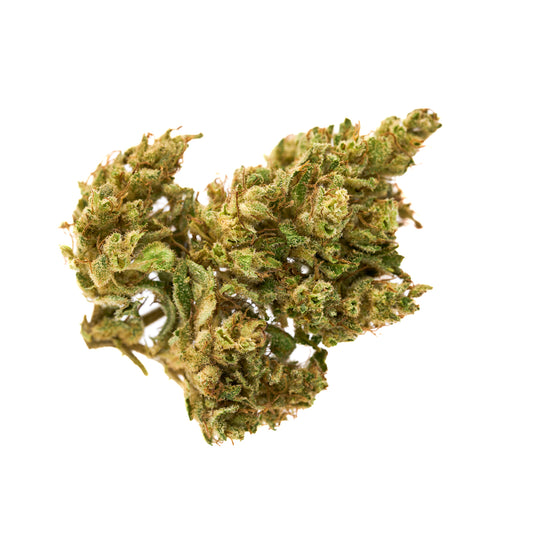
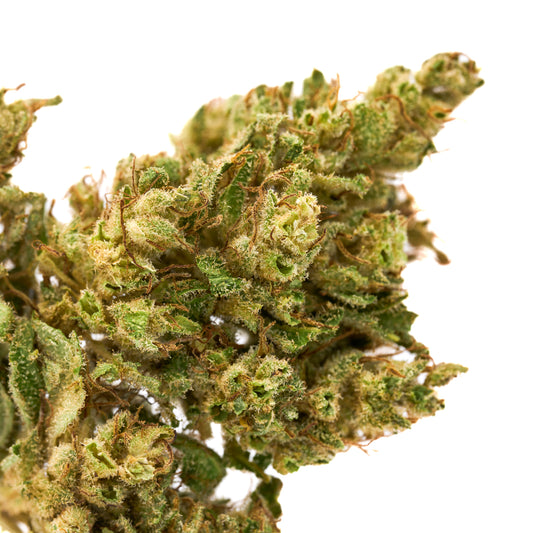
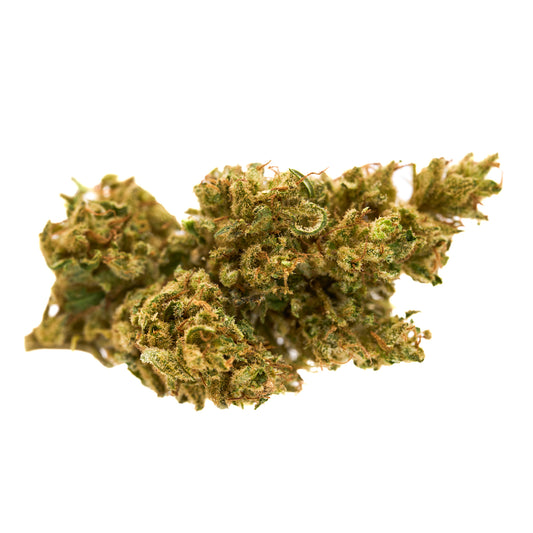
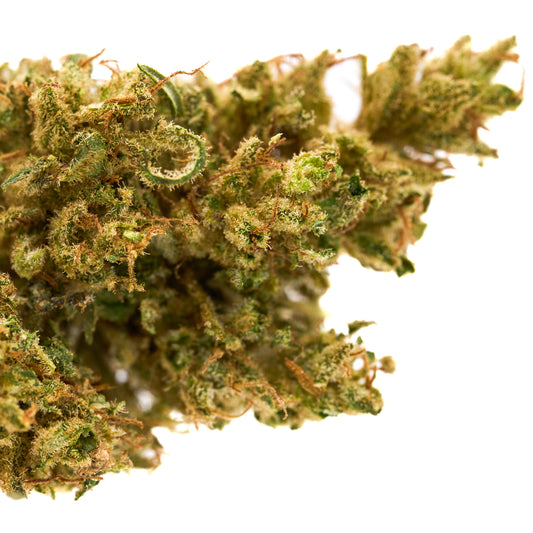
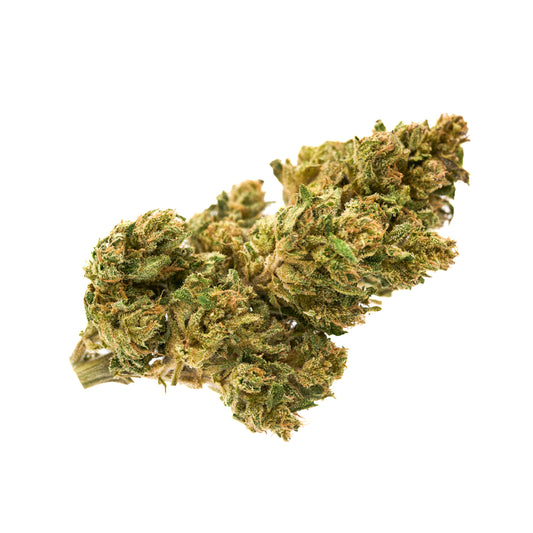
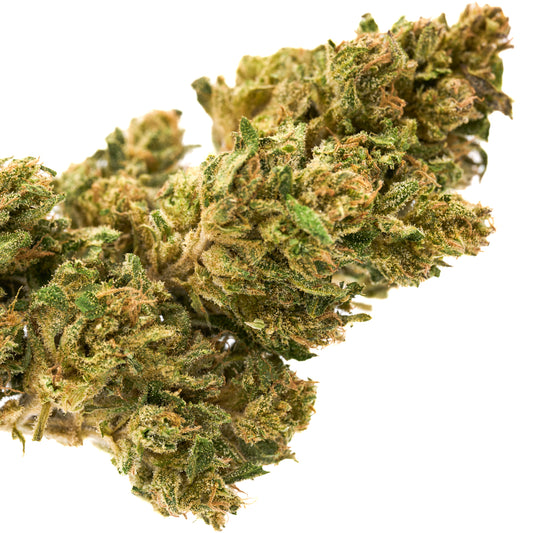



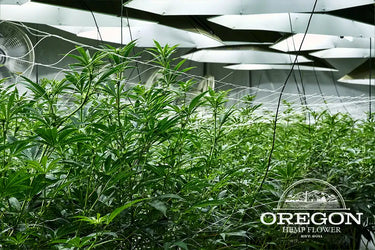

Leave a comment
Please note, comments need to be approved before they are published.